
Bank robbery is the criminal act of stealing from a bank, specifically while bank employees and customers are subjected to force, violence, or a threat of violence. This refers to robbery of a bank branch or teller, as opposed to other bank-owned property, such as a train, armored car, or (historically) stagecoach. It is a federal crime in the United States.
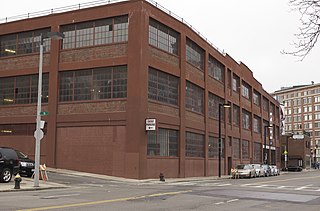
The Great Brink's Robbery was an armed robbery of the Brink's building in the North End of Boston, Massachusetts, on January 17, 1950. The $2.775 million theft consisted of $1,218,211.29 in cash and $1,557,183.83 in checks, money orders, and other securities. It was at the time the largest robbery in the history of the United States and has been called "the crime of the century". The robbery remained unsolved for nearly six years, until estranged group member Joseph O'Keefe testified only days before the statute of limitations would have expired.

Kate Barker, better known as Ma Barker, was the mother of several American criminals who ran the Barker–Karpis Gang during the "public enemy era" when the exploits of gangs of criminals in the Midwestern United States gripped the American people and press. She traveled with her sons during their criminal careers.
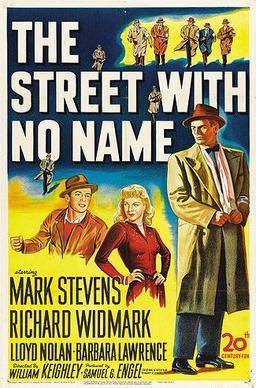
The Street with No Name is a 1948 American film noir directed by William Keighley. A follow-up to The House on 92nd Street (1945), it tells the story of an undercover FBI agent, Gene Cordell, who infiltrates a deadly crime gang. Cordell's superior, FBI Inspector George A. Briggs, also appears in The House on 92nd Street. The film, shot in a semidocumentary style, takes place in the Skid Row section of fictional "Center City".
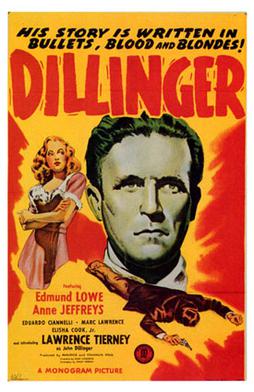
Dillinger is a 1945 gangster film telling the story of John Dillinger.

The Brink's Company is an American cash handling company, headquartered in Richmond, Virginia. Its operations include cash-in-transit, ATM replenishment & maintenance, and cash management & payment services, such as vault outsourcing, money processing, intelligent safe services, and international transportation of valuables.
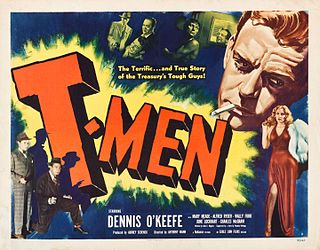
T-Men is a 1947 semidocumentary and police procedural style film noir about United States Treasury agents. The film was directed by Anthony Mann and shot by noted noir cameraman John Alton. The production features Dennis O'Keefe, Mary Meade, Alfred Ryder, Wallace Ford, June Lockhart and Charles McGraw. A year later, director Mann used the film's male lead, Dennis O'Keefe, in Raw Deal.

Crime Wave is a 1954 American film noir starring Sterling Hayden and Gene Nelson, and directed by Andre de Toth. It was adapted from a short story which originally appeared in The Saturday Evening Post - "Criminal Mark" by John and Ward Hawkins.

Robbery is a 1967 British crime film directed by Peter Yates and starring Stanley Baker, Joanna Pettet and James Booth. The story is a heavily fictionalised version of the 1963 Great Train Robbery. The film was produced by Stanley Baker and Michael Deeley, for Baker's company Oakhurst Productions.

Roger Touhy was an Irish American mob boss and prohibition-era bootlegger from Chicago, Illinois, in the United States. He is best remembered for having been framed by his rivals in Chicago organized crime for the fake 1933 kidnapping of Jewish-American organized crime figure and Chicago Outfit associate John "Jake the Barber" Factor, a brother of cosmetics manufacturer Max Factor Sr.. Despite numerous appeals and at least one Federal court ruling freeing him, Touhy spent 26 years in prison until he was finally exonerated and released in November 1959. In retaliation for filing a lawsuit against acting boss Tony Accardo and other senior Mafiosi, Touhy was murdered in an alleged contract killing by the Chicago Outfit less than a month after his release.
Carl Gugasian is an American bank robber, known as "The Friday Night Bank Robber", who served a 17-year sentence for armed robbery. He is perhaps the most prolific of such criminals in US history, having robbed more than 50 banks over a 30-year period of a total of more than $2 million.
Carleton O'Brien was an organized crime figure involved in bookkeeping and policy operations in Rhode Island. Formerly listed as Public Enemy No. 1 by state officials, O'Brien was one of the last independent racketeers as the Patriarca crime family began establishing themselves in Providence. He was also an associate of bank robber Joseph "Specs" O'Keefe and was involved in the planning of the Great Brinks Robbery during the early 1950s.
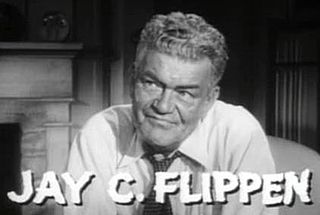
Hot Summer Night is a 1957 crime film directed by David Friedkin and starring Leslie Nielsen, Colleen Miller, and Edward Andrews.
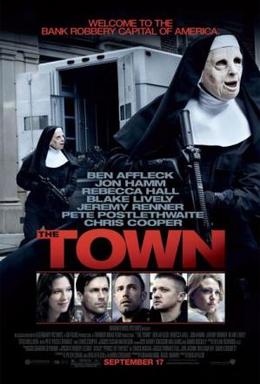
The Town is a 2010 American crime thriller film co-written and directed by Ben Affleck, adapted from Chuck Hogan's 2004 novel Prince of Thieves. The film stars Affleck, Rebecca Hall, Jon Hamm, Jeremy Renner, Blake Lively, Titus Welliver, Pete Postlethwaite, Chris Cooper and Slaine. Its plot follows a Boston bank robber who begins to develop romantic feelings for a victim of one of his previous robberies, while he and his crew set out to get one final score by robbing Fenway Park.
Elmer "Trigger" Burke was an American hitman during the mid-to-late 1940s. He was brought up by his older brother, Charlie. In 1941, he was sent to reform school, but later had his sentence cut for joining the army, where he served in the Italian campaign as an Army Ranger. Later, he served a sentence of two years in Sing Sing Prison for robbery. During his time in jail, his idol and brother, Charlie, was murdered by a man named George Goll. Goll was arrested and later released. To get revenge, Burke shot Goll in Manhattan at the age of 27. Elmer earned his nickname "Trigger" because he would shoot people behind the ear; the police ultimately caught up with him because of his pattern hits. Elmer used to say "He didn't hold up the police station only because they get paid by checks." He would shake down businesses in Manhattan and have them pay him for protection.

House of the Rising Sun is a 2011 American action drama film starring Dave Bautista. Filming took place in Grand Rapids, Michigan. The screenplay was written by Chuck Hustmyre and Brian A. Miller, based on Chuck Hustmyre's novel of the same title.

Marauders is a 2016 American crime film directed by Steven C. Miller and written by Michael Cody and Chris Sivertson. The film stars Christopher Meloni, Bruce Willis, Dave Bautista, and Adrian Grenier. Meloni plays an FBI agent investigating a series of brutal bank robberies that seem to be personally targeting a ruthless CEO played by Willis. Lionsgate Premiere released the film on July 1, 2016.

Blueprint for Robbery is a 1961 American crime film directed by Jerry Hopper and written by Irwin Winehouse and A. Sanford Wolf. The film stars J. Pat O'Malley, Robert J. Wilke, Robert Gist, Romo Vincent, Jay Barney and Henry Corden. The film was released on February 1, 1961, by Paramount Pictures.
The Lincoln National Bank robbery took place on September 17, 1930 when a group of armed men entered a bank in Lincoln, Nebraska, stole approximately $2.7 million in cash and securities, and then fled with help of a getaway driver. No one was seriously injured during the robbery. The majority of the money was never recovered.














